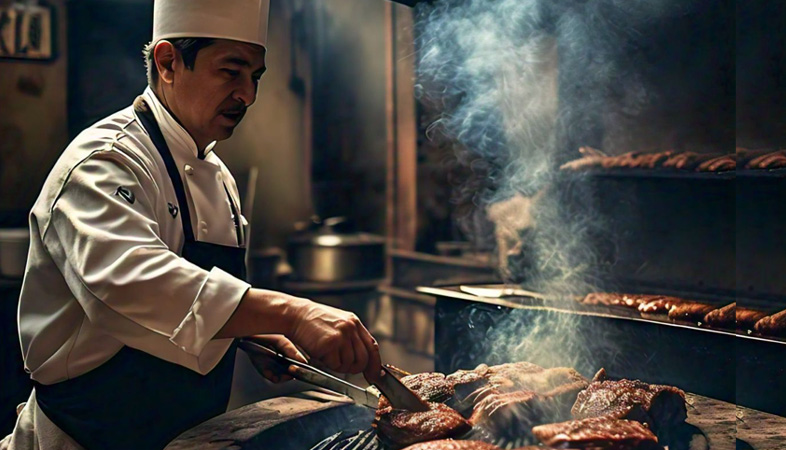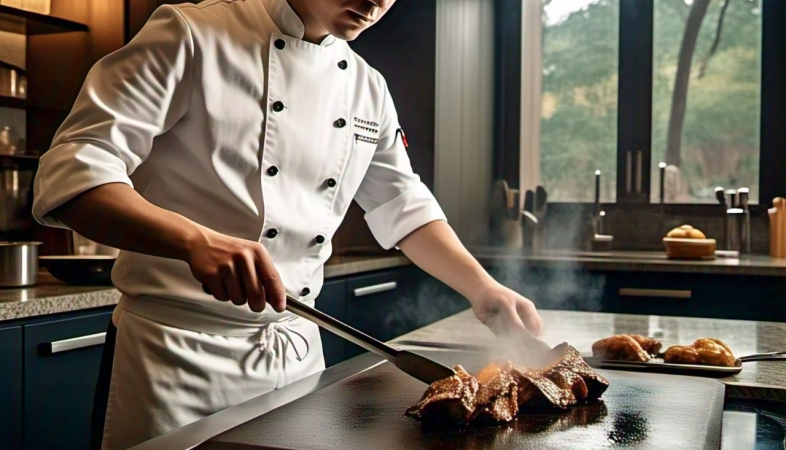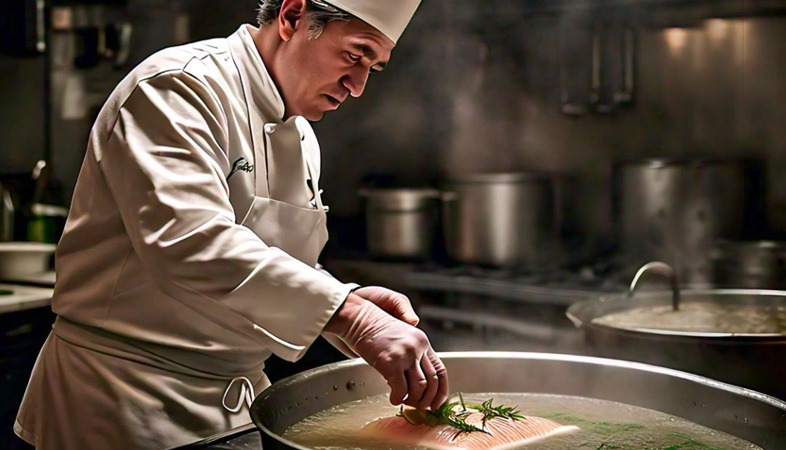Charcoal Infusion: Techniques for Unleashing Bold Flavors in Your Dishes
Known for its deep, smoky essence, charcoal infusion is transforming how chefs and home cooks approach flavoring their meals.
In recent years, charcoal has emerged as a culinary trend
that not only adds a striking visual element to dishes but also imparts unique
flavors that captivate the palate. Known for its deep, smoky essence, charcoal
infusion is transforming how chefs and home cooks approach flavoring their
meals. This technique goes beyond mere aesthetics; it enhances the overall
dining experience by introducing bold, unexpected layers of taste that elevate
a wide array of dishes.
Charcoal is derived from the burning of wood or organic materials, resulting in a porous substance that is rich in flavor compounds. When infused into foods, it brings a distinct smokiness that can transform traditional recipes into something extraordinary. The infusion process can take various forms, from incorporating charcoal powder into batters and doughs to using it in marinades and sauces. Each method unlocks different flavor profiles, making it a versatile ingredient in the kitchen.
One of the most popular ways to infuse charcoal into dishes is through the use of charcoal powder. This fine, black powder can be easily integrated into a variety of recipes, adding both color and flavor. For instance, mixing charcoal powder into bread dough creates strikingly dark loaves that are visually appealing while contributing a subtle smokiness. Charcoal-infused bread can serve as the perfect base for gourmet sandwiches, complementing fillings with its unique taste.
In addition to baking, charcoal powder can also enhance sauces and dressings. Incorporating it into barbecue sauces or salad dressings creates a rich, complex flavor that pairs well with grilled meats and roasted vegetables. A charcoal-infused vinaigrette can elevate a simple salad, adding depth and intrigue to each bite. By experimenting with different ratios of charcoal powder, cooks can customize the intensity of the smoky flavor, ensuring it enhances rather than overwhelms the dish.
Grilling is another effective technique for infusing charcoal flavors into food. Using charcoal as the primary fuel source for grilling imparts a distinct smokiness to meats, vegetables, and even fruits. The key to successful charcoal grilling lies in the choice of wood and the method of preparation. For example, using hardwoods like hickory or mesquite can amplify the smokiness, while fruitwoods like apple or cherry can offer a sweeter profile. This infusion process not only enhances the flavor but also adds a delightful char that contributes to the overall texture of the dish.
When grilling, marinating ingredients in a charcoal-infused mixture can further intensify the flavor. Creating a marinade that incorporates charcoal powder along with other complementary ingredients, such as soy sauce, garlic, and ginger, can infuse meats and vegetables with bold, smoky undertones. Allowing the ingredients to marinate for an extended period ensures that the flavors penetrate deeply, resulting in a well-seasoned dish that tantalizes the taste buds.
In addition to traditional cooking methods, modern techniques such as sous vide can also be used to infuse charcoal flavors into dishes. Sous vide cooking involves vacuum-sealing food and cooking it in a water bath at a precise temperature. By including charcoal-infused oils or spices in the vacuum-sealed bag, chefs can impart smoky flavors while retaining the food’s moisture and tenderness. This method is particularly effective for proteins, allowing for a perfectly cooked piece of meat that bursts with flavor.
It’s important to note that while charcoal infusion offers exciting flavor possibilities, moderation is key. The intensity of charcoal flavors can vary significantly, and using too much can overpower the dish. When experimenting with charcoal, it’s advisable to start with small amounts and gradually increase until the desired flavor profile is achieved. This approach ensures a balanced dish that showcases the uniqueness of charcoal without compromising the integrity of the other ingredients.
For those who may be concerned about the health implications of consuming charcoal, it is essential to choose activated charcoal that is food-grade and specifically intended for culinary use. Activated charcoal is known for its detoxifying properties and is often used in health and wellness products. When used appropriately, it can add an exciting element to dishes while offering potential health benefits.
Charcoal infusion is a dynamic technique that unlocks bold flavors and transforms traditional dishes into extraordinary culinary experiences. By incorporating charcoal powder into baking, grilling, and modern cooking methods, chefs and home cooks can create visually stunning and flavorful meals that leave a lasting impression. With careful consideration of flavor balance and the right applications, charcoal can become a cherished ingredient in any kitchen, inviting diners to explore new depths of taste and creativity. Embracing this trend not only enhances the sensory experience of dining but also invites culinary exploration and innovation.
.png)




























